Blog

Caregivers play a crucial role in helping seniors and individuals with mobility challenges remain safe and independent at home. And while home modifications benefit the person living there, they also make life safer and less stressful for caregivers. Thoughtful accessibility features — wider doorways, zero-threshold showers, ramps, grab bars, non-slip flooring, and even smart-home tools — lighten the physical and emotional load placed on caregivers every day. At Accessible Living Atlanta , we see firsthand how the right modifications: 🔹 Reduce lifting and strain for caregivers 🔹 Improve safety for everyone in the home 🔹 Support independence and dignity for loved ones 🔹 Create smoother daily routines for families A safer home doesn’t just empower the individual — it empowers the entire care network that supports them. 👉 We’re proud to partner with caregivers, families, and healthcare professionals to make aging in place possible.
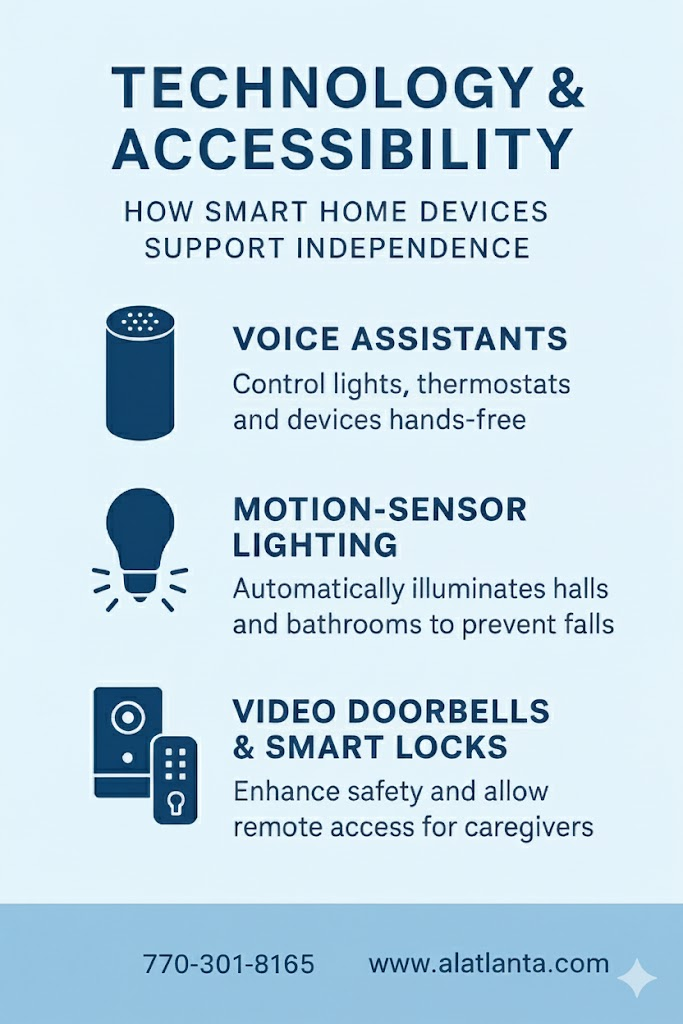
Smart home technology is transforming how seniors and individuals with mobility challenges live safely and independently. When paired with professional home modifications , these tools create a powerful system for aging in place with confidence. Key examples include: 🔹 Voice assistants that control lights, thermostats, and devices hands-free 🔹 Motion-sensor lighting that automatically illuminates halls and bathrooms to prevent falls 🔹 Video doorbells & smart locks that enhance safety and allow remote access for caregivers These technologies reduce reliance on others, improve daily safety, and provide peace of mind for families and caregivers. At Accessible Living Atlanta , we design safe, accessible, and user-friendly homes that integrate both traditional accessibility solutions and modern smart technology . #TechnologyAndAccessibility #SmartHome #AgingInPlace #HomeModifications #AccessibleLiving #SafeHomesForSeniors #MobilitySolutions

When someone is injured on the job, the focus is often on medical recovery — but what happens when returning home brings new challenges? For many, workers’ compensation benefits can help cover essential home modifications that restore safety, accessibility, and independence. These upgrades may include: 🔹 Zero-threshold showers for safe, independent bathing. 🔹 Ramps or platform lifts for easy access to entries and exits. 🔹 Wider doorways and open floor plans for wheelchair navigation. 🔹 Grab bars, handrails, and non-slip flooring for fall prevention. A work-related injury can change how someone moves through their home — but with the right support, it doesn’t have to limit how they live. At Accessible Living Atlanta , we’ve helped many families work with insurance and workers’ comp programs to create safe, user-friendly homes that promote healing, comfort, and confidence — inside and out. 👉 If you know someone adjusting to life after an injury, we can help them explore how workers’ compensation may fund the modifications they need.

When a fire or emergency strikes, seconds matter. For someone who is wheelchair-bound, uses a walker, or struggles with mobility , getting out of the home can become nearly impossible without proper planning and modification. In Georgia, building codes require at least one operable emergency exit , and most homes include two egress points so one can serve as a backup if the other is blocked. But here’s the challenge: If both exits have steps… If doorways are too narrow… If there’s no clear, safe path outside… If the threshold is too high for a wheelchair… Those exits aren’t truly accessible. ✔ Common Barriers We See: High thresholds Narrow doors Multiple steps at all exits No ramp access Obstacles in the egress path Heavy exterior doors difficult to operate ✔ Home Modifications That Change Outcomes: Zero-threshold exterior doors Ramps or modular ramp systems Widened doorways Smooth, slip-resistant paths to safe areas Vertical platform lifts (when terrain prevents ramp installation) Reinforced grab bars at exit points An emergency is not the time to discover a home’s limitations. Planning ahead means safety, dignity, and peace of mind for families and caregivers. 📞 770-301-8165 | 🌐 www.alatlanta.com
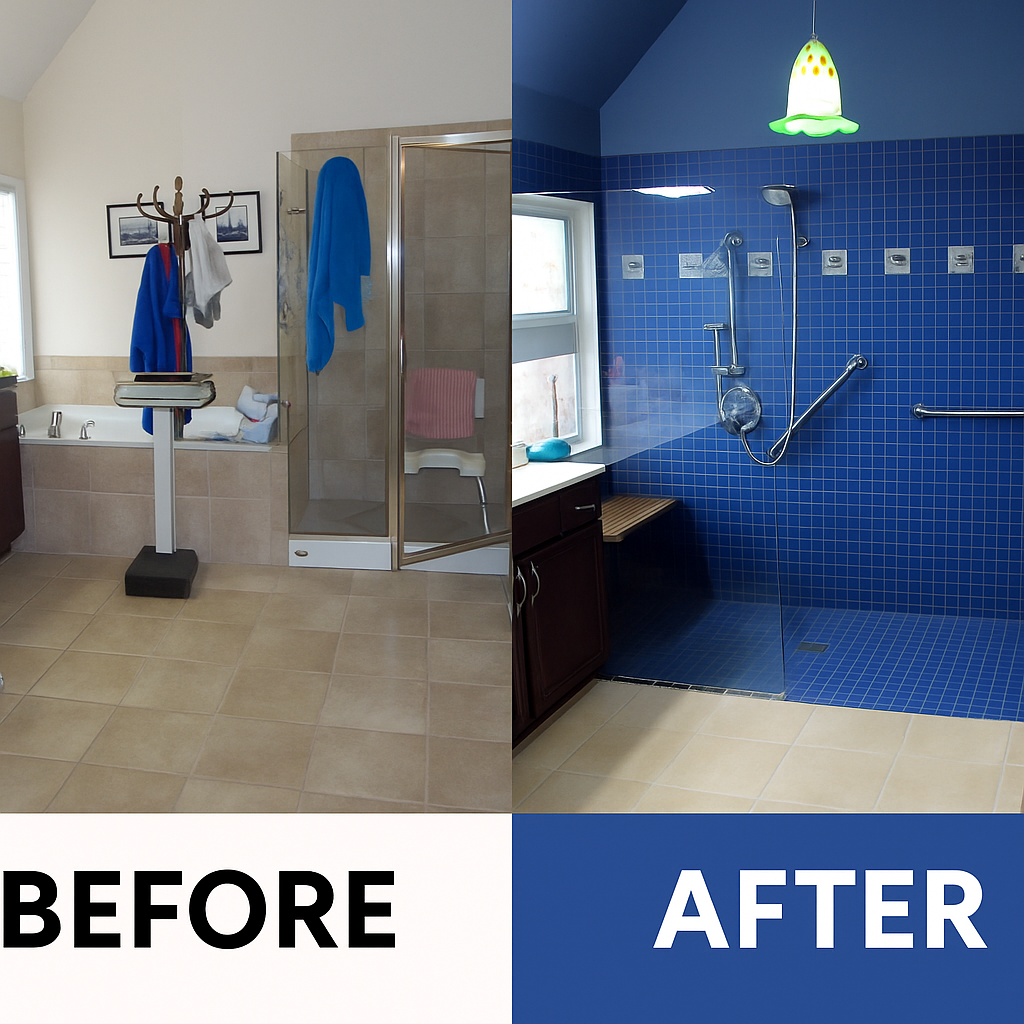
This client in Woodstock, GA became wheelchair bound and could no longer access her traditional garden tub . Bathing safely was impossible — until we stepped in to redesign the space for safety, mobility, dignity, and future care planning . 🔑 Key Project Modifications: ✔ Removed the full garden tub ✔ Installed a zero-threshold / barrier-free shower ✔ Created additional open floor space for wheelchair maneuverability ✔ Added built-in shower seat & handheld shower attachment ✔ Installed multiple grab bars , including front-wall placement ✔ Used non-slip flooring throughout ✔ Modified the cabinet & sink for roll-under wheelchair access ✔ Widened the powder room door to allow easy entry ✔ Expanded the overall bathroom layout for future caregiver assistance 🌟 Outcome: The client can now bathe independently, safely, and without assistance. The bathroom is also now designed to accommodate a caregiver in the future , ensuring long-term accessibility and dignity. “I never thought I’d be able to bathe on my own again — this changed my life.” 📞 770-301-8165 | 🌐 www.alatlanta.com
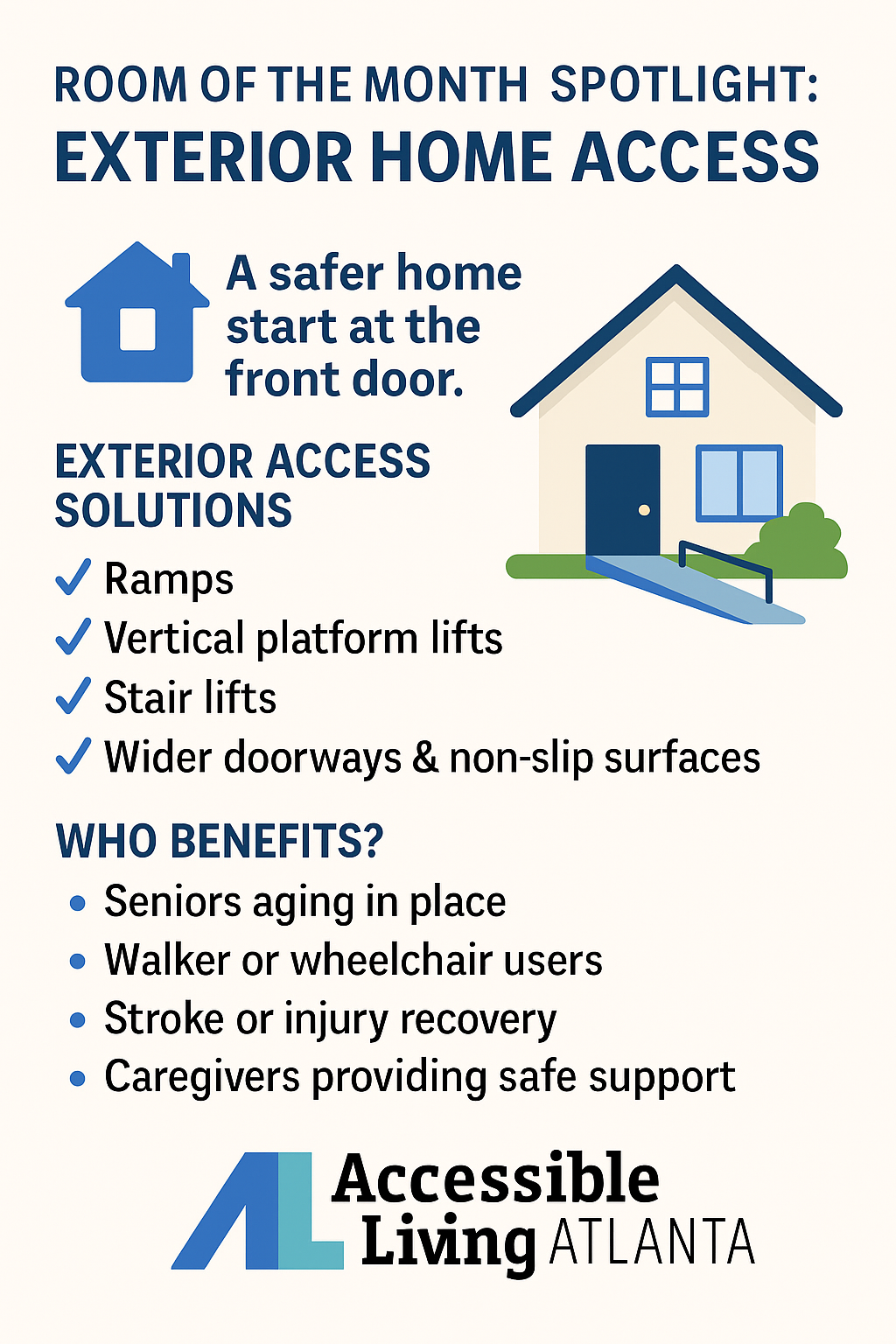
The entrance to a home sets the tone for safety, dignity, and independence. As mobility changes, steps and narrow entryways become major barriers — but with the right home modifications, safe entry can be restored without relocation. 🔷 Exterior Access Solutions Ramps & step reduction Vertical platform lifts Stair lifts on sloped entries Widened entry doors Non-slip walkways with handrails 🔷 Ideal for: Seniors aging in place Wheelchair & walker users Balance or mobility issues Stroke & injury recovery Caregivers who assist with daily access At Accessible Living Atlanta, we create safe homes for seniors and individuals with physical challenges — starting right at the doorstep.

Even a single modification — a grab bar, roll-under sink, or zero-threshold shower — can dramatically impact someone’s ability to live safely and remain independent. The people who benefit most are: 🔹 Seniors choosing to age in place 🔹 Individuals using mobility devices 🔹 Adults recovering from stroke, injury, or surgery 🔹 People with arthritis, neuropathy, Parkinson’s, or balance issues 🔹 Caregivers who need safer environments to provide support Thoughtful home modifications promote confidence, dignity, safety, and long-term independence. At Accessible Living Atlanta, our mission is simple: Make homes safer so people can live better.
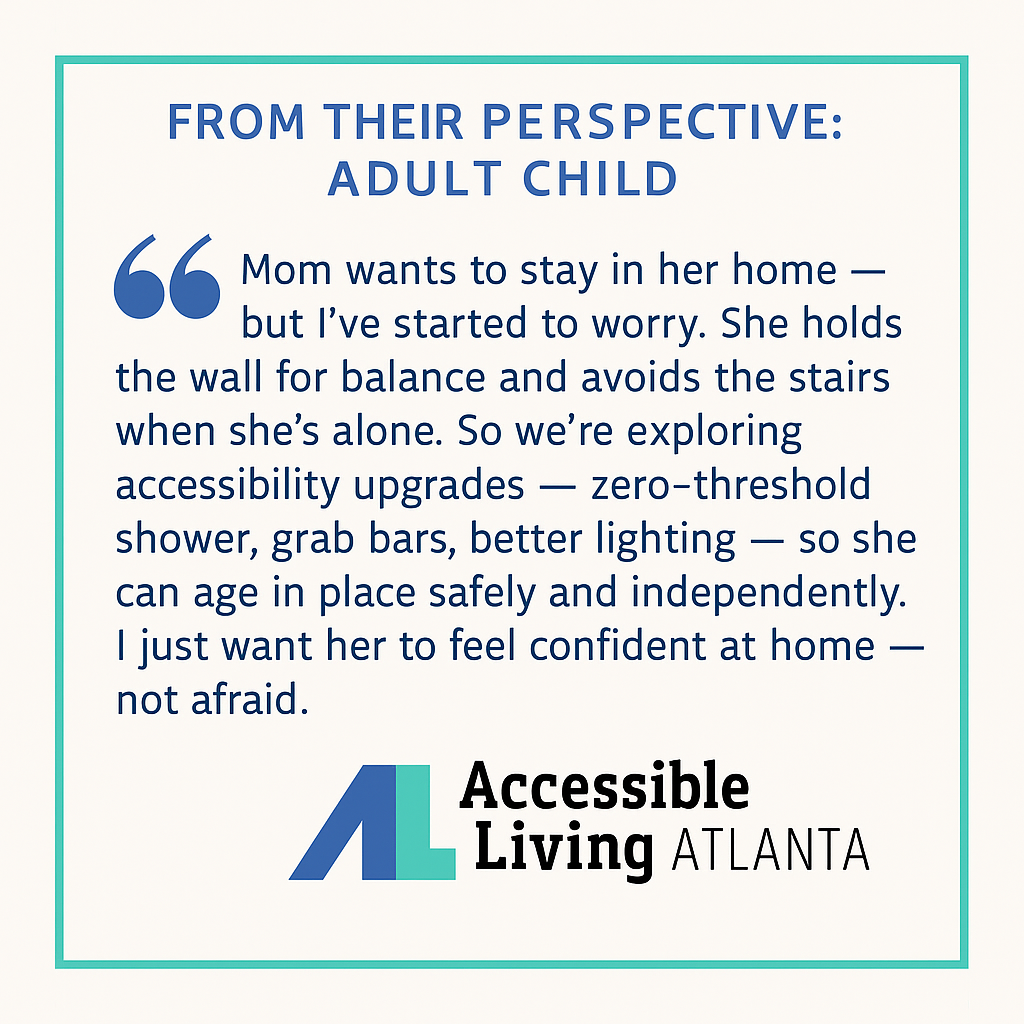
“I’m starting to worry about my mom more than she knows. She still wants to live at home and stay independent — but I’ve noticed small things… she holds the wall when walking down the hall, steps very carefully into the tub, and avoids the stairs when she’s alone. I know she wants to age in place — but I need to know she’s safe. That’s why we’re looking into home modifications. A zero-threshold shower, grab bars, widened doorways, better lighting — these changes may seem small, but they mean everything when it comes to safety, dignity, and independence. I just want her to feel confident at home — without losing the place she loves the most.” At Accessible Living Atlanta , we help families create safe homes for seniors with accessible bathrooms, zero-threshold showers, roll-under sinks, fall prevention solutions, and thoughtful aging in place strategies. Because home should be a place of independence — not worry. 💙
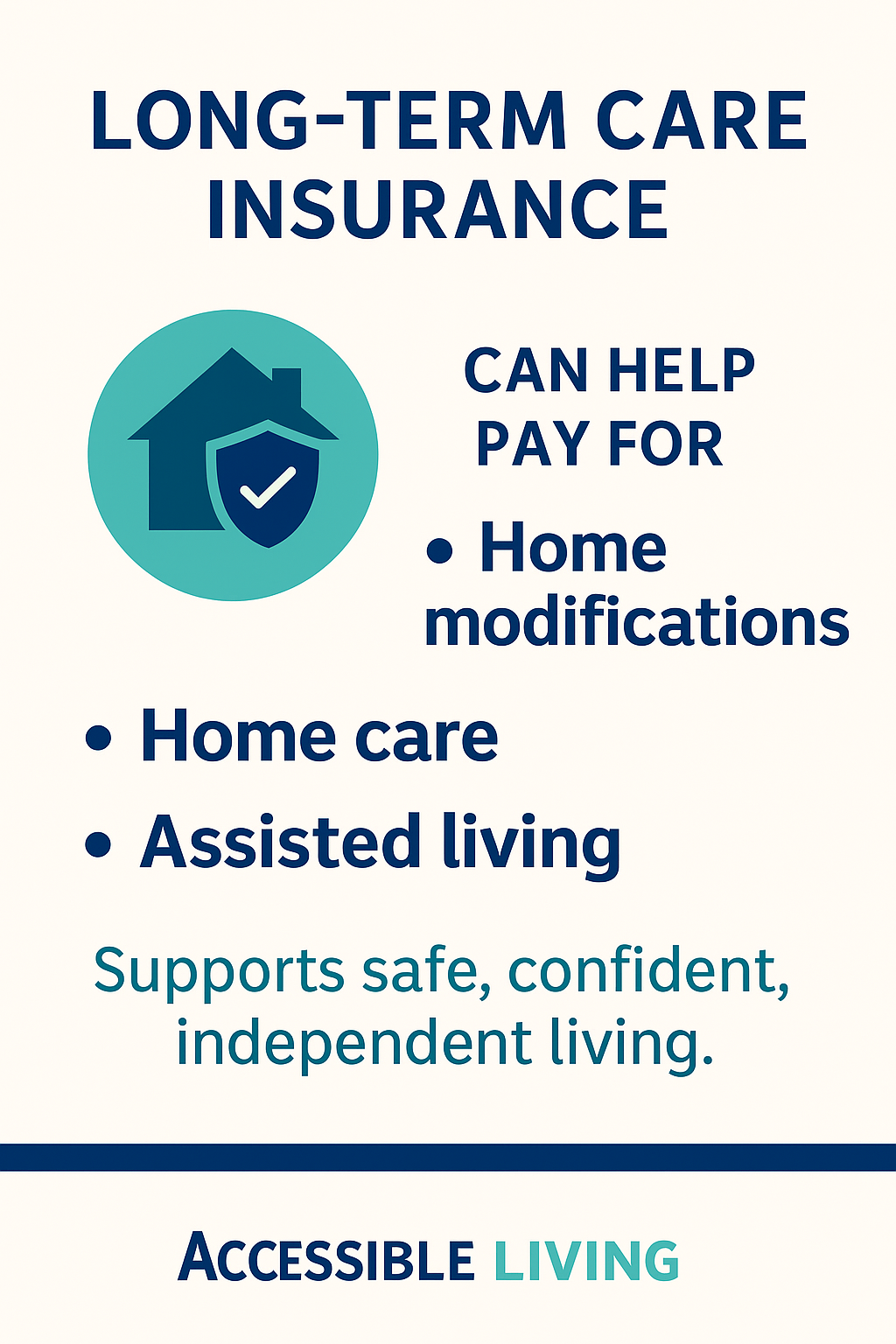
For individuals planning to age in place , Long-Term Care Insurance (LTCI) can play a critical role in maintaining safety, independence, and quality of life. While many assume LTCI only applies to nursing homes, most modern policies offer significant benefits for: • Home modifications (zero-threshold showers, ramps, grab bars, accessible bathrooms) • In-home care services • Assisted living options For adults in their mid-50s , exploring LTCI is particularly beneficial. This age range often offers the best combination of lower premiums and good health — increasing the likelihood of approval.
